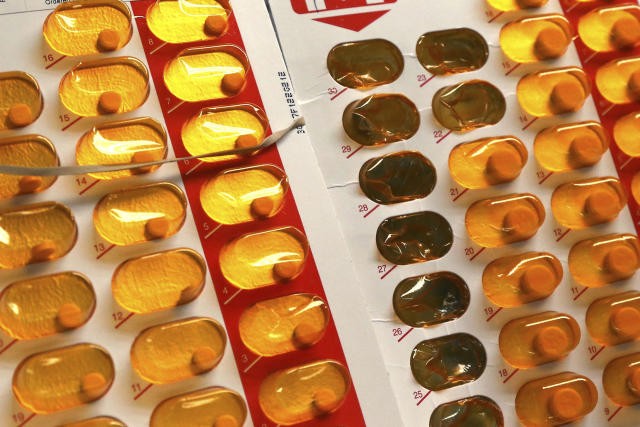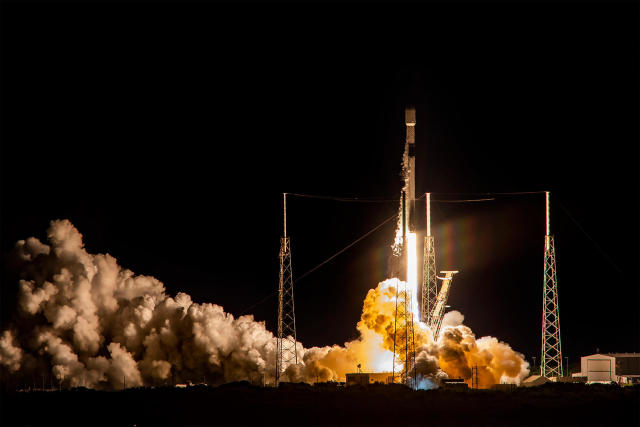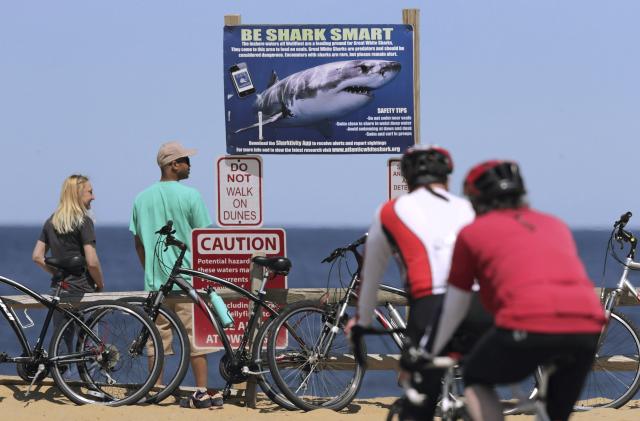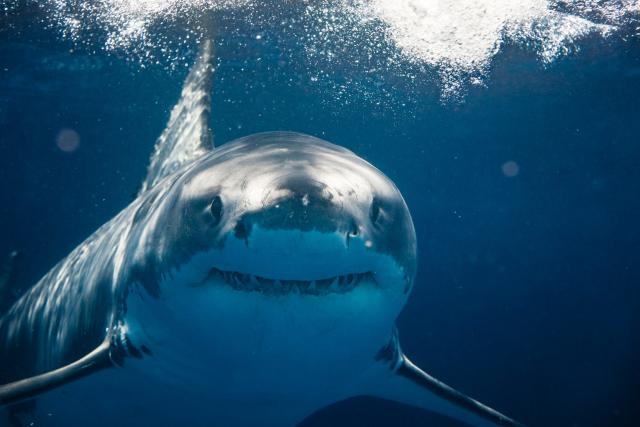Science Daily News | 14 Jun 2023

Views (132)

Creative ice cream flavors could make this a sweet, savory, scoop-worthy summer
Travel anywhere on the planet and you'll find some version of ice cream. If you’re in Seoul, try a “J”-shaped puffed corn cone filled with soft ice cream. Recent years have seen an explosion of novel flavor combos, unexpected ingredients and new presentations from ice cream makers large and small, food editors say.

Travel anywhere on the planet and you'll find some version of ice cream. Grab a lemon gelato in Italy; a stick of butterscotch kulfi in Nepal; a cinnamon paleta bar in Mexico. If you’re in Seoul, try a “J”-shaped puffed corn cone filled with soft ice cream.
North Americans tend to be loyal to chocolate, vanilla and cookies 'n’ cream, according to the International Dairy Foods Association. We like our half gallons or waffle cones stuffed with the fondly familiar.
Still, the world of ice cream isn’t immune to change, and like any culinary domain, it’s evolving. Recent years have seen an explosion of novel flavor combos, unexpected ingredients and new presentations from ice cream makers large and small, food editors say.
Ice cream makers, like a lot of chefs, are embracing an international pantry, says Alana Al-Hatlani, assistant food editor at Southern Living magazine.
One of Tyler Malek’s favorites is Strawberry Honey Balsamic with Black Pepper ice cream. To showcase flavorful Oregon strawberries, he worked with a local beekeeper who’d developed a honey balsamic vinegar.
“Adding a splash of that allowed the strawberry flavor to really shine through,” Malek says.
Salt & Straw’s Thanksgiving lineup features turkey bacon, buttery brittle and jammy cranberry sauce flavors folded into a five-course feast of ice creams.
Lisa is Persian, so the couple were delighted to find orchards in the Hudson Valley that could source perfect black cherries for a Labne Sour Cherry ice cream. The labne is similar to tangy Greek yogurt.
Texture also plays a role in the modern ice cream experience.
“Our Cider Donut flavor has whole donuts blended into the base,” says Ackley. “And we’ve got a green apple sorbet made from whole fresh apples – chunks or not chunks, depending on what I feel delivers the best flavor and texture combo that day.”
Jeni’s recently launched a Ted Lasso ice cream, called Biscuits with the Boss, with shortbread cookies inside.
Sgroi has seen some fun hacks on TikTok, like blended, frozen, sweetened cottage cheese ice cream.
“Another popular one (though slightly less healthy!) is ice cream wrapped in a fruit roll-up. It’s gimmicky, messy and a bit hard to eat, but no one seems to mind — the original recipe video has millions of views,” she says.
Non-dairy ice creams are evolving to meet modern demand, says Al-Hatlani: “Vegan or plant-based options aren’t new, but they’re getting better and creamier.”
Grocery store shoppers are encountering new ice cream flavors and formats from familiar brands. To name just a few: Baskin Robbins has pints of Triple Mango Ice Cream, swirled with real mango, mango sorbet and mango ribbons; Ben and Jerry’s has introduced chocolate-coated ice cream bars called pint slices; and Entenmann’s has launched an ice cream sandwich line based on some of their baked goods, like chocolate chip cookies and glazed donuts.
—-
New York-based writer Kim Cook covers design and decor topics regularly for The AP. Follow her on Instagram at @kimcookhome.
SpaceX launches 124 payloads in Monday doubleheader
The second launch of the day also included SpaceX's 200th successful booster landing.

In a Monday doubleheader, SpaceX launched 52 Starlink internet satellites from Florida and then fired off another Falcon 9 from California, putting 72 small payloads from multiple vendors into orbit in the company's eighth low-cost "rideshare" mission.
SpaceX's 89th Starlink flight took off from the Cape Canaveral Space Force Station at 3:10 a.m. EDT, lighting up the overnight sky as it climbed away on a southeasterly trajectory.
The 52 Starlinks on board were released to fly on their own about an hour later, boosting the total launched to date to 4,595. Of that total, space statistician Jonathan McDowell says 4,230 are presumed functional.
SpaceX's fast-growing Starlink constellation is a globe-spanning network of relay stations in multiple orbital planes designed to eventually deliver relatively high-speed broadband access to any point on Earth using laser-linked satellites to maintain connectivity.
The Transporter 8 mission took off from Vandenberg Space Force Base northwest of Los Angeles at 5:35 p.m. EDT, carrying 72 rideshare payloads provided by multiple vendors and launch brokers.
Transporter missions are intended to provide low-cost access to space for small payloads that might otherwise have to wait for rides on missions dedicated to larger satellites. SpaceX charges $275,000 for a 110-pound payload, and $5,500 for each additional 2.2 pounds. In the high-cost world of space operations, those prices are considered bargains.
The payloads launched in the Transporter 8 mission ran the gamut from pharmaceutical processing in microgravity and space debris removal systems to experimental military hardware, commercial radar mapping satellites and Earth observation stations.
With the Starlink and Transporter 8 missions, Space has launched 38 Falcon 9s and two Falcon Heavies so far this year, putting some 1,295 payloads into orbit.
'Smartphones' for sharks: Scientists upgrade sensors to keep track of Cape Cod's white sharks
Scientists monitoring the white shark population in the waters off Massachusetts' Cape Cod are attaching improved sensors, including cameras, to the predators to help scientists keep track of their whereabouts and to keep beachgoers informed and safe, researchers said Tuesday. The program comes just as tourists are filling up hotels and rental properties on the Cape for the summer — and white sharks are returning in greater numbers to feed on the region's abundant seals. Interactions between white sharks and humans are rare.

Scientists monitoring the white shark population in the waters off Massachusetts' Cape Cod are attaching improved sensors, including cameras, to the predators to help scientists keep track of their whereabouts and to keep beachgoers informed and safe, researchers said Tuesday.
Interactions between white sharks and humans are rare. But the risk is still there. There have been five in Massachusetts since 2012 — three of them classified as bites, one of which was fatal, said Greg Skomal, the state Division of Marine Fisheries shark expert.
“So as a result, we’ve intensified our research off the Cape to study various aspects of white shark behavior," Skomal said.
For more than a decade, the fisheries division and the nonprofit Atlantic White Shark Conservancy have tagged about 300 sharks with acoustic sensors that emit a high-frequency sound to an array of receivers along the coast. Public safety officials and lifeguards are notified when a shark swims within range of an acoustic receiver.
This year, researchers are attaching more camera sensors to the predators.
They capture more than just video. The sensors can detect a shark's depth, direction, surrounding water temperature and whether it’s accelerating or slowing down. The technology allows scientists to monitor the sharks on a second-by-second basis, Skomal said.
Megan Winton, a staff scientist at the Atlantic White Shark Conservancy, calls it giving smartphones to sharks.
“They’re outfitted with an incredible array of sensors that tell us about the animal’s movements and their environment," she said, adding that it's “essentially just riding on the back of a white shark."
The information is downloaded to a free app available to the public to reduce encounters and promote safety.
One video captured by a camera tag clamped to a shark’s dorsal fin shows the predator moving into water about 4 feet (1.2 meters) deep close to shore to go after a seal, stirring up a storm of sand from the bottom. The seal ultimately escaped.
Sharks are patient hunters.
“They slowly patrol the shoreline very methodically until they essentially have a chance to make their move," Winton said.
The technology also has provided insight into how curious sharks are. They have been seen coming to the surface to nibble a lobster buoy or check out a bird or some other piece of flotsam, she said.
Researchers also have started using drones to help spot sharks from above, a method that has been used in other parts of the world, including Australia, Skomal said.
The drawback of the sensor system is that if a shark has not been tagged, it won't be detected. But the program does its best to provide information to the public so they can make informed decisions while at the beach.
“We want them to understand these animals and their habits the way we do,” Winton said.
Rare photos show a pod of orcas swimming 40 miles off the coast of Massachusetts
New England Aquarium scientists photographed four killer whales near Nantucket as they were conducting an aerial survey of the area.

New England Aquarium scientists photographed four orcas near Nantucket on Sunday.
Orcas have been behind a spate of recent boat attacks near Spain.
It's rare for killer whales to venture into North Atlantic waters.
Katherine McKenna, an assistant research scientist at the aquarium's Anderson Cabot Center for Ocean Life, was the one who first saw the orcas.
"Initially I could just see two splashes ahead of the plane," she said in the press release. "As we circled the area, two whales surfaced too quickly to tell what they were. On the third surfacing, we got a nice look and could see the tell-tale coloration before the large dorsal fins broke the surface."
"I think seeing killer whales is particularly special for us because it unlocks that childhood part of you that wanted to be a marine biologist," Orla O'Brien, an associate research scientist who leads the aquarium's aerial survey team, said in the press release.
Scientists were 'shocked' to discover that juvenile white sharks regularly venture near swimmers and surfers but don't attack
Researchers observed over 1,600 encounters between juvenile white sharks and humans. Never once did the sharks take a bite out of the humans.

Researchers found that juvenile white sharks swam close to humans 97% of the time.
Juvenile white sharks grow up to become great white sharks, known for being dangerous to humans.
One researcher said they were "shocked" that juvenile great whites never attacked any humans.
They conducted a total of 1,644 aerial drone surveys and found that juvenile great white sharks came close to human swimmers, paddle boarders, and surfers 97% of the time during their study, but the sharks never attacked once.
"And the fact that no one was being bitten smacks in the face of the misconception that if there's a white shark nearby, you'll be attacked. This shows that's not the case," he added.
From the researchers' drone footage, it may look like juvenile white sharks like to hang around swimmers and surfers. But it's probably not because they're fond of us.
Also, juvenile great whites prefer warmer waters, which again may overlap with regions beachgoers flock to.
"This is completely normal shark behavior and there is nothing that suggests to me that sharks are choosing locations based on human presence," Macdonald added.
In fact, most of these cases in California are of mistaken identity, according to the researchers. The shark thinks it is biting into a seal, and instead, it's a surfboard or a person.
Moreover, Rex said the attacks mostly happen with adult great whites (at least 21 feet long) as they are the ones that feed on seals and sea lions that are human-shaped and -sized.
"We really aren't on the menu for sharks of this size range," Papastamatiou said.
Their diet includes stingrays, small fish, and fish on the bottom of the seafloor, like halibut.
"So when they hunt, they are hunting on the seafloor rather than at the surface where people are. So really, we don't think the sharks want anything to do with us in general," Rex added.
Few rehab centers for addicted teens offer recommended medicine, US study finds
Only 1 in 4 residential treatment centers for teens offers a recommended medicine for opioid addiction, according to a study that exposes an important gap in care. Posing as an aunt or uncle seeking help for a fictitious 16-year-old who survived a fentanyl overdose, researchers called U.S. rehabs and asked if they offered the treatment medication buprenorphine. Of 160 facilities with care for teens, just 39 provided buprenorphine, also known by the brand name Suboxone.

Only 1 in 4 residential treatment centers for teens offers a recommended medicine for opioid addiction, according to a study that exposes an important gap in care.
Posing as an aunt or uncle seeking help for a fictitious 16-year-old who survived a fentanyl overdose, researchers called U.S. rehabs and asked if they offered the treatment medication buprenorphine.
Of 160 facilities with care for teens, just 39 provided buprenorphine, also known by the brand name Suboxone. One hundred said they didn't and 21 said they didn't know.
Parents describe long, frustrating searches for help.
“It’s such an overwhelming situation for a parent to be in,” said Tracy Swartley of suburban Portland, Oregon, whose 19-year-old Eagle Scout son survived a fentanyl overdose and was able to start buprenorphine while in a residential treatment program. “You realize the choice you make is going to make a massive impact on the success of your child.”
Buprenorphine can be a “life-saving medication,” said Dr. Petros Levounis, an addiction psychiatrist and president of the American Psychiatric Association. Considered standard care, it is the only medication approved for teens 16 and older with opioid use disorder. It works by reducing cravings so a patient can begin the work of recovery.
The survey was done last year, before a new law eliminated the need for doctors to get a special waiver to prescribe it. That change may improve access, said Levounis, who was not involved in the research. Residential care is not the only alternative, he said, and parents should start by getting an evaluation from an addiction specialist.
The researchers found youth rehabs were just as likely to offer art, music or horse therapy as they were to offer buprenorphine.
Based on their results, the average parent would have to make nine phone calls to find a facility offering the medicine to a 16-year-old, said study co-author Dr. Caroline King, an emergency medicine resident at Yale University in New Haven.
“These families have to do a lot of legwork," King said.
The “secret shopper” strategy may have missed some rehabs that provide the medication, King acknowledged. But researchers also heard misinformation about buprenorphine, said King who posed as a concerned aunt when she made calls.
“A lot of people told us crazy things,” King recalled, "like 'It’s the worst thing you could do for your kid. Don’t trust your doctor.'”
Very few states require facilities to offer medication as a condition for licensure, but that could be a solution to the treatment gap, said Brendan Saloner, an addiction researcher at Johns Hopkins Bloomberg School of Public Health, who was not involved in the study.
___
The Associated Press Health and Science Department receives support from the Howard Hughes Medical Institute’s Science and Educational Media Group. The AP is solely responsible for all content.
0 Likes
